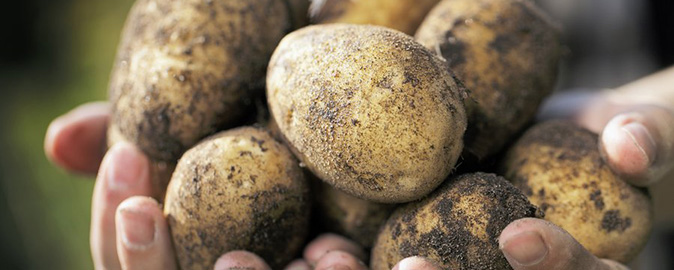IPMBlight 2.0

- Acronym: IPMBlight 2.0
- Title: IPM2.0 for sustainable control of potato late blight - exploiting pathogen population data for optimized Decisions Support Systems
- Countries involved: FR, DK, NO, EE, UK
- Total budget: € 1.229.210
Expanding the fight against potato blight
The battle between potato growers and potato blight is an arms race in which both sides continue to develop new attack and defence mechanisms. The potato blight pathogen is highly variable and evolves very quickly, so potato growers need to be on top of it constantly.
A new project involving scientists from eight different research institutions in France, Denmark, Norway, Estonia and Great Britain aims to tackle the problem by analysing the pathogen’s genotypic and phenotypic variations and evolution. The three-year project, entitled IPMBlight 2.0, has a total budget of € 1.229.210.
Late blight in potatoes is caused by Phytophthora infestans. The disease is the major threat to potato crops in Europe and a main reason for pesticide use. In severe blight years farmers in some regions spray their potato fields up to 25 times in a season. In Europe, potato blight costs an estimated average of one billion euros per year.
Integrated pest management (IPM), in which the use of pesticides is only one of a wide range of tools, is the desired route to take in crop protection for a number of reasons. One IPM tool is the use of resistant cultivars. However, integrated management of late potato blight still relies heavily on the use of fungicides, despite the release of resistant cultivars and the implementation of modern decision support systems (DSS) operated from web platforms or mobile apps.
The genetic instability of the pathogen population is one reason why it is so hard to control. Its marked genetic adaptability jeopardizes the deployment of durably resistant cultivars and sustainable fungicide management. The main objective of the project is therefore to characterize and understand the mechanisms driving population changes in P. infestans across Europe.
Sustainable IPM strategies require that the pathogen populations be monitored for both genotypes and phenotypes, including virulence, aggressiveness and fungicide sensitivity. The project partners will therefore analyse the genotypic and phenotypic variation of P. infestans in reference collections of the pathogen sampled from sexual and clonal populations collected in partner countries.
Monitoring population variation is only useful if it can help prediction of future outbreaks and target appropriate control strategies. The project will therefore develop new DSS models while adjusting existing ones in order to offer disease risk assessment based on both epidemiological, weather-driven infection likelihood and pathogen phenotypes. The new DSS modules will thus be able to address farmers’ questions about which resistant cultivars to use, when to spray, how to adjust the spraying schedule according to local populations and so on, and therefore to improve their late blight control.
The project builds on the monitoring activities carried out within EuroBlight, and complements them by providing critical, but currently unavailable phenotypic data.

For more information about the project
please contact:
Dr. Didier Andrivon
Institut National de la Recherche Agronomique, France
E-mail: Didier.Andrivon@rennes.inra.fr